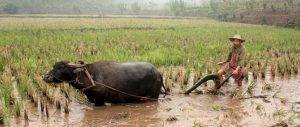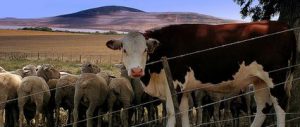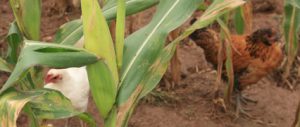With food prices at an all time high, the number of people going hungry in the world may once again rise above one billion. For many years now, world leaders and international institutions like the United Nations and the World Bank have grappled with how to increase food production to feed a growing population while simultaneously mitigating climate change and confronting a shortage of resources like oil, water and topsoil.
Now a recent report by the UN Special Rapporteur on the Right to Food, Olivier de Schutter, has said that the approach known as agroecology has the potential to double food production in key areas within 10 years, while simultaneously providing rural livelihoods, sequestering carbon and building in resilience to climate extremes.
“To feed 9 billion people in 2050, we urgently need to adopt the most efficient farming techniques available. And today’s scientific evidence demonstrates that agroecological methods outperform the use of chemical fertilisers in boosting food production in regions where the hungry live,” said de Schutter. He added, “We won’t solve hunger and stop climate change with industrial farming on large plantations.” The majority of the world’s hungry are smallholder farmers. The evidence shows that, using agroecology, these farmers can increase their food production to provide for their families.
Agroecology combines the fields of ecology and agronomy, seeking to build sustainable, diverse and productive agroecosystems by mimicking nature. Often, agroecology begins by observing traditional or indigenous agriculture and analysing the scientific principles underlying them. In this way, modern science can help improve — but not discard and replace — traditional agricultural systems, effectively making use of local knowledge and resources. The new report describes one agroecological system used in east Asia, in which a farmer raises rice, ducks and azolla (an aquatic fern) together. The azolla suppresses weeds and provides nutrients to the rice and food for the ducks, while the ducks eat bugs that might otherwise become pests to the rice. Thus, the farmer will not need to purchase additional inputs like fertiliser, herbicides or insecticides in order to produce both rice and ducks.
Marcia Ishii-Eiteman, a senior scientist with Pesticide Action Network, summarised the benefits of agroecology: “Through ecological practices, farmers can increase biological diversity, decrease erosion, improve water and nutrient cycling, provide habitat for pollinators and build the soil’s organic matter.” Ishii-Eiteman was one of over 400 scientists who worked on the International Assessment of Agricultural Knowledge, Science, and Technology for Development (IAASTD) report, published in 2008. This report also found that agroecology promised a powerful means for smallholder farmers to increase food production and decrease hunger in the world.
According to Eric Holt-Gimenez, executive director of Food First, an organisation that works to eliminate the injustices that cause hunger, agroecology is used by peasant farmers throughout the developing world. For example, the Campesino a Campesino Movement has spread it throughout many parts of Latin America, Africa and Asia over the past two decades. Noting that agroecology has largely been ignored or even criticised by industry and governments as being unable to produce enough food to end hunger, he said: “Agroecology has been spread primarily by peasant and smallholder groups and NGOs, often working with independent scientists… Because of this, practice is racing far ahead of theory. It is actually a very exciting field of science because of its tremendously positive impact on the ground with relatively little investment.”
The only government in the world to promote agroecology in a significant way is Cuba, which adopted agroecology out of necessity: after the fall of the Soviet Union in 1989, the communist state was left outside the network of international trade others relied upon to produce and import food. Cubans refer to the years that followed as the “Special Period”. It was a time when Cubans, without access to the necessary oil, fertiliser and pesticides to grow their food using industrial methods, had their lives turned upside down. But Cuba acted quickly to adopt and disseminate agroecological farming methods among its people. Because of fuel shortages, it also had to locate farms and gardens in and around urban areas to minimise transportation needs. Holt-Gimenez calls Cuba “a very hopeful example of what could be if government really got behind the agroecological approach.”
To date, the United States has not embraced agroecology, either among its own farmers or in its efforts to provide agricultural aid abroad. In the US, a small percentage of farms are now organic and grow food without nitrogen fertiliser, toxic pesticides or genetically modified seeds. However, most American organic farms practice input substitution, an intermediary step between industrial agriculture and agroecology. In the input substitution stage, chemical inputs are each replaced with organic ones; manure is used instead of nitrogen fertiliser; and organic pesticides like Bt are used instead of more toxic and persistent ones. However, true agroecological design is “probably rare” in the US, said Holt-Gimenez, though he noted that some wineries were converting to agroecology.
One of the most famous agroecological farms in the US is Polyface Farms, the Virginia farm of Joel Salatin. Salatin has carefully choreographed an “orchestra” of livestock, rotating each species around his farm to maximise productivity and ecological benefit. First, his beef cattle will graze a pasture before they move on to a new location. A few days later, after fly larvae have hatched and grown fat in the manure the cattle left behind, Salatin will bring in his portable chicken coop. The chickens eagerly eat the fly larvae, ridding Salatin of an insect problem while also spreading the manure so it can fertilise the soil. In this way, the cattle and chickens are moved around the farm, allowing each pasture to recover from grazing before the cattle return once again. He has similarly clever strategies for raising his pigs, rabbits and turkeys.
In his report, de Schutter wrote that agroecology’s “resource-conserving, low-external-input techniques have a proven potential to improve yields,” citing a study that found an average increase in crop yields of 79% once agroecological techniques were adopted. The report also noted the importance of biodiversity in improving the diets of smallholder farmers. While the majority of one’s calories may come from staple grains like rice, wheat or maize, supplementary foods grown in biodiverse agroecological systems will provide vital nutrients or even provide an important source of food during lean times.
The report also emphasised the importance of adopting agricultural techniques that can both mitigate climate change and provide resilience to the increasing climate extremes the world will likely experience in the coming years. First, it lauds agroecology for “delinking food production from the reliance on fossil energy (oil and gas)” and contributing to “mitigating climate change, both by increasing carbon sinks in soil organic matter and above-ground biomass, and by avoiding carbon dioxide and other greenhouse gas emissions from farms by reducing direct and indirect energy use.” Additionally, it notes agroecology’s ability to “significantly cushion the negative impacts” of extreme weather events like droughts or hurricanes.
In his report, de Schutter calls for nations to take actions to help smallholder farmers in developing nations adopt agroecological farming, like reinvesting in agricultural research and extension services, investing in forms of social organisation that encourage partnerships, empowering women and “creating a macro-economic enabling environment, including connecting sustainable farms to fair markets.”
The United Nations Food and Agriculture Organization has estimated that the world must increase food production by 70% by 2050 in order to feed a population of over 9 billion. If the world follows the path outlined in de Schutter’s report and attains the productivity gains that the research indicates are possible, then it could even exceed that necessary increase in food production — and it could do so long before 2050.
Jill Richardson is founder of La Vida Locavore and the author of Recipe for America: Why Our Food System is Broken and What We Can Do To Fix It.
Homepage image from David Bradbeer


